Grooming anxiety can be a common issue for many pets, causing stress and discomfort during the grooming process. As a professional pet groomer, I understand the importance of recognizing the signs of anxiety to ensure a safe and calm experience for our furry friends. In this article, I will share various techniques and approaches that can help create a stress-free grooming experience for anxious pets.
Key Takeaways:
- Recognizing the signs of grooming anxiety is essential for both pet owners and groomers.
- Calming techniques, such as using anti-anxiety products and positive reinforcement training, can help alleviate anxiety during grooming.
- Incorporating mobile grooming services provides a personalized and comfortable environment for anxious pets.
- Pet owners can play a crucial role in calming their anxious pets at home through touch desensitization and positive associations.
- Identifying the causes of grooming anxiety, such as separation anxiety or past trauma, can assist in tailoring the grooming approach.
Recognizing Grooming Anxiety in Pets
Grooming anxiety can affect many pets and is characterized by various signs and behaviors. It is crucial for pet owners and groomers to be able to recognize these signs in order to address the anxiety and provide a safer and more comfortable grooming experience. Ignoring grooming anxiety can lead to more severe behavioral issues and potential danger during the grooming process.
Signs of Grooming Anxiety:
- Rapid breathing
- Panting
- Whining
- Shaking
- Hiding
- Aggressive behavior
- Vomiting
- Diarrhea
These signs may indicate that a pet is experiencing grooming anxiety. Each pet may exhibit a combination of these signs, and it’s important to pay attention to any changes in their behavior during the grooming process. Recognizing these signs can help pet owners and groomers take appropriate measures to alleviate anxiety and ensure a better grooming experience.
For example, if a pet starts panting excessively, it may be a sign of stress or anxiety. Groomers and pet owners should consider taking breaks during the grooming session, allowing the pet to relax and calm down before continuing. This can help prevent further anxiety and avoid potential behavioral issues.
It’s also important to note that grooming anxiety can stem from traumatic experiences in a pet’s past. Pets who have had negative encounters with grooming in the past may exhibit more pronounced signs of anxiety during subsequent grooming sessions. Understanding a pet’s history and providing a gentle and patient grooming experience can help ease their anxiety and build trust.
Expert Insights:
“Recognizing the signs of grooming anxiety is crucial for ensuring the safety and well-being of pets during the grooming process. By identifying these signs early on, pet owners and groomers can take appropriate measures to address the anxiety and create a more positive and stress-free grooming experience.” – Dr. Sarah Thompson, Veterinarian
Comparing Signs of Grooming Anxiety in Pets
| Signs of Grooming Anxiety | Dogs | Cats |
|---|---|---|
| Rapid breathing | ✓ | ✓ |
| Panting | ✓ | ✓ |
| Whining | ✓ | – |
| Shaking | ✓ | – |
| Hiding | – | ✓ |
| Aggressive behavior | ✓ | – |
| Vomiting | ✓ | – |
| Diarrhea | ✓ | – |
This table compares the signs of grooming anxiety between dogs and cats. While certain signs are common to both species, others may be more prevalent in one or the other. Understanding these differences can help tailor the approach to addressing grooming anxiety based on the specific needs and behaviors of different pets.
Calming Techniques for Anxious Pets
When it comes to grooming anxious pets, it’s essential to employ calming techniques that help them relax and feel at ease. By using various methods such as treats, distraction, and positive reinforcement, pet owners and groomers can create a soothing environment that minimizes anxiety and ensures a stress-free grooming experience.
Using Calming Products
One effective approach to soothing anxious pets during grooming is to utilize calming products. Mutt Muffs, for example, are ear muffs specifically designed to protect puppy ears from loud noises. By reducing noise sensitivity, these earmuffs can significantly alleviate grooming anxiety, allowing pets to remain calm and composed throughout the process.
Positive Reinforcement with Treats
Treats can be a powerful tool in positively reinforcing pets during grooming. By offering treats at strategic intervals, pet owners and groomers can distract anxious pets from any discomfort they may be experiencing. This not only acts as a form of positive reinforcement but also helps pets associate grooming with a rewarding experience. It’s important to choose treats that are both delicious and enticing to ensure their effectiveness in soothing anxious pets.
Gentle Touch and Desensitization
Incorporating gentle touch and desensitization techniques can help pets become more comfortable during grooming sessions. By gradually introducing pets to grooming tools, sounds, and sensations, their anxiety can be reduced over time. Starting with small, non-threatening steps and gradually increasing exposure can help them develop a tolerance and familiarity with the grooming process. Through consistent, patient practice, pets can learn to associate grooming with calmness and relaxation.
Creating a soothing environment for anxious pets during the grooming process is essential for their overall well-being. By implementing calming techniques such as using specific products, offering treats for positive reinforcement, and incorporating gentle touch and desensitization, pet owners and groomers can help alleviate grooming anxiety and provide a stress-free grooming experience.
Benefits of Mobile Grooming Services
When it comes to grooming anxious pets, mobile grooming services offer a range of benefits that can provide anxiety relief, personalized pampering, and trust-building experiences. Unlike traditional brick and mortar salons, mobile grooming services eliminate the need for pets to be exposed to potentially stressful stimuli. This includes excessive noise from hair dryers, clippers, and other pets, which can trigger anxiety in sensitive animals.
With mobile grooming, pets can enjoy a personalized and comfortable environment right at their doorstep. Groomers are able to dedicate extra time and attention to each anxious pet, allowing for a more relaxed grooming experience. This one-on-one interaction helps build trust between the pet and groomer, leading to a stronger bond and a deeper sense of security during the grooming process.
Furthermore, mobile grooming services can tailor the grooming experience to cater to the individual needs of anxious pets. The groomer can create a calming atmosphere by avoiding loud noises and using soothing techniques. By personalizing the grooming session, pets can feel more at ease and less anxious, resulting in a stress-free experience.
With mobile grooming services, anxious pets can benefit from anxiety relief, personalized pampering, and trust-building opportunities. The convenience of mobile grooming brings the calming environment directly to the pet’s home, reducing their exposure to potential stress triggers. This personalized approach allows groomers to establish a sense of trust and provide individualized care, ultimately creating a more relaxed and enjoyable grooming experience for anxious pets.
Tips for Calming Anxious Pets at Home
As a pet owner, you can play a crucial role in calming your anxious pets during grooming sessions. By utilizing certain techniques and strategies, you can create a more relaxed and stress-free experience for your furry friend.
1. Touch Desensitization
One effective technique is touch desensitization, which involves gently touching and massaging your pet in sensitive areas. Start by introducing touch in non-threatening areas, such as their back or shoulders, and gradually work your way towards more sensitive areas like their paws or ears. This process helps pets become more comfortable with grooming and reduces their anxiety levels.
2. Positive Associations
Creating positive associations with grooming can significantly reduce anxiety in pets. Offer treats and praise during the grooming process as a form of positive reinforcement. This makes grooming a rewarding experience for your pet and helps them associate it with pleasant feelings. Using treats that are specifically designed to promote calmness, such as CBD-infused treats, can also be beneficial in reducing anxiety.
3. Pre-Grooming Exercise
Before grooming sessions, try taking your pet for a long walk or engaging them in vigorous play. This helps release excess energy and can leave them more relaxed during grooming. Physical activity helps promote relaxation by reducing stress and anxiety levels in pets.
“By implementing touch desensitization, creating positive associations, and providing pre-grooming exercise, you can create a calm and enjoyable grooming experience for your anxious pet.” – Dr. Emily Johnson, Pet Behavior Specialist
Remember, patience is key when dealing with anxious pets. Take your time and allow your pet to get accustomed to the grooming process at their own pace. With consistent and positive reinforcement, you can help ease their anxiety and make grooming a more pleasant experience for both of you.
Top Calming Products for Anxious Pets
| Product | Description |
|---|---|
| Mutt Muffs | Ear muffs designed to protect puppy ears from loud grooming noises. |
| CBD-Infused Treats | Treats infused with CBD, known for their calming properties. |
| Calming Sprays | Natural sprays that emit calming pheromones to reduce anxiety. |
| Thundershirt | A snug-fitting garment that provides gentle pressure, similar to a calming hug. |
Identifying the Causes of Grooming Anxiety
Understanding the causes of grooming anxiety is crucial in effectively addressing and preventing it. There are several common factors that can contribute to grooming anxiety in pets:
- Separation Anxiety: Pets who experience separation anxiety may become stressed when separated from their owners, including during grooming sessions. The fear of being apart can amplify their anxiety, making the grooming process more challenging.
- Sensory Sensitivities: Some pets may have heightened sensitivities to grooming tools and noises. The sound of clippers or the sensation of being touched by certain tools can trigger anxiety and discomfort.
- Past Trauma: Pets with a history of traumatic experiences, such as abusive handling or past grooming incidents that were painful or frightening, may develop grooming anxiety as a result.
- Pain: Underlying medical conditions or physical discomfort can also contribute to grooming anxiety. Pets experiencing pain or discomfort may associate grooming with additional discomfort, leading to anxiety.
By identifying the specific cause or triggers of grooming anxiety, pet owners and groomers can develop personalized strategies to alleviate anxiety and create a more soothing grooming experience.
In the next section, we will explore various calming techniques that can help address grooming anxiety and create a stress-free experience for pets.
Conclusion
Grooming anxious pets can be a challenging task, but with the right techniques and approaches, it is possible to create a stress-free experience for our furry friends. By recognizing the signs of grooming anxiety and implementing calming techniques, we can help alleviate their stress and make the grooming process more enjoyable.
Considering mobile grooming services can be a great option for anxious pets. These services provide a personalized and comfortable environment, free from the potential stressors found in traditional salons. This allows groomers to dedicate extra time and attention to each pet, building trust and creating a calming atmosphere.
It is important to involve pet owners in the grooming process. By educating them on calming techniques and encouraging their participation, we can provide a consistent and supportive environment for our pets. This includes touch desensitization, positive associations, and releasing excess energy through exercise before grooming sessions.
By focusing on the individual needs of anxious pets and creating a calm and soothing environment, we can help them associate grooming with a positive and rewarding experience. With patience, understanding, and the right techniques, grooming can become a stress-free and enjoyable part of their lives.
FAQ
What are the signs of grooming anxiety in pets?
Signs of grooming anxiety in pets may include rapid breathing, panting, whining, shaking, hiding, aggressive behavior, vomiting, and diarrhea.
How can I calm my anxious pet during the grooming process?
There are several techniques you can use to calm your anxious pet during grooming, including the use of calming products, positive reinforcement with treats, gentle touch and desensitization to grooming sounds.
How can mobile grooming services benefit anxious pets?
Mobile grooming services can benefit anxious pets by providing a personalized and comfortable environment, eliminating exposure to stressful stimuli in a salon, and allowing for extra time and attention from the groomer.
How can I calm my anxious pet at home during grooming?
You can calm your anxious pet at home during grooming by using techniques such as touch desensitization, positive associations with treats and praise, and taking your pet for a long walk before grooming sessions.
What are the common causes of grooming anxiety in pets?
Common causes of grooming anxiety in pets include separation anxiety, sensitivity to grooming tools and noises, past traumatic experiences, and pain due to underlying medical conditions.

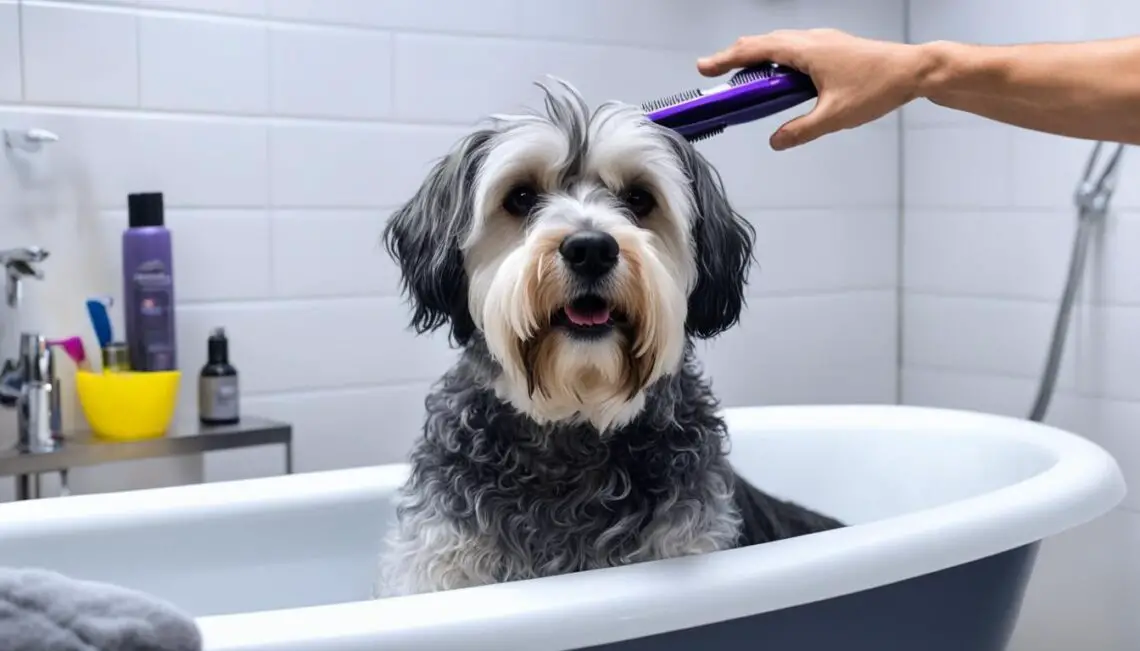

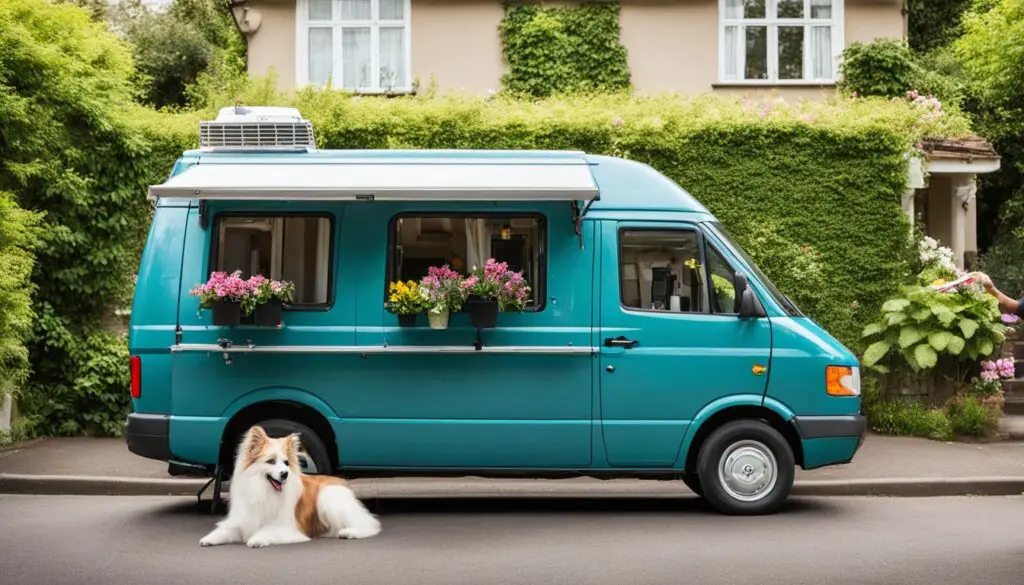
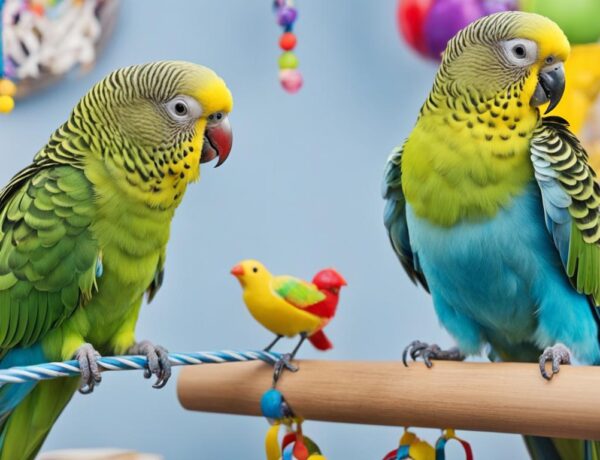
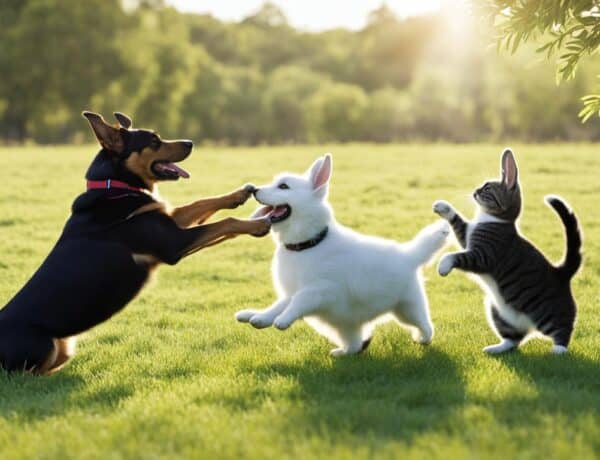
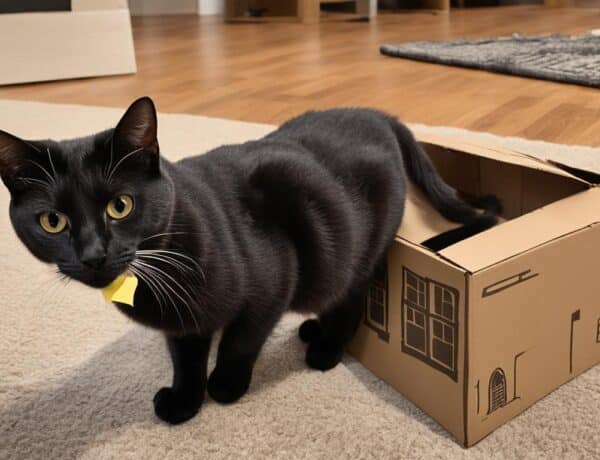
No Comments